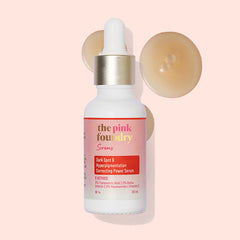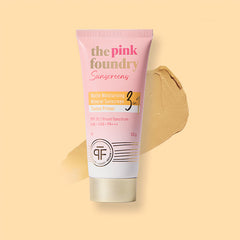What is photosensitivity and its effects on the skin?
Irrespective of your skin type, you might develop photosensitive skin for several reasons. And once you develop photosensitivity, you might be at a greater risk for enduring skin damage. This might happen even from minimal exposure to the harmful UV radiations of the sun.
Understanding what is photosensitivity and the reason behind its occurrence will help you take extra care of your skin. Besides, you can also learn a few techniques for safeguarding your skin's health.
This article will give you informative insights into photosensitivity, its causes, symptoms, and a few other things. Please keep reading until the end of the article to learn more about it. Let's dive in.
What is Photosensitivity?
Photosensitivity is a typical sensitivity to the UV rays of the sun and several other light sources. Photosensitive people are at a greater risk of sunburn during highly long exposure to sunlight.
Being exposed to UV rays can eventually lead to skin damage. Some people might also develop burns and rushes even after exposure to the sun for a short time.
As a general rule of thumb, those with photosensitivity must strictly wear sunscreen when being exposed to any UV light. Wearing a hybrid sunscreen, like our Dewy Hydrating Hybrid Sunscreen, is typically considered a great option as it provides both chemical and physical protection from UV rays.
What are the Causes of Photosensitivity
Generally, photosensitivity is known to be a common side effect of certain medications, including prescription medicines and antibiotics.
Additionally, certain chronic medical conditions can also promote photosensitivity.
Symptoms of Photosensitivity
The primary symptoms of photosensitivity typically vary from mild to severe. However, the most common symptom is an exaggerated sunburn or skin rash.
In photosensitivity, the rashes might or might not cause itching. And in some cases, the sunburn can also become highly severe, thereby paving the way for developing blisters. In some severe skin conditions, peeling and weeping of your skin might also occur.
Please note that each photosensitivity reaction depends on the amount of sun exposure because some people might develop severe rashes and burns with very little exposure. In comparison, some can experience skin reactions only after prolonged exposure to the sun.
What are the Types of Photosensitivity Reactions
Certain types of chemicals typically make the skin react to sun exposure. Usually, two different types of photosensitive reactions are noticed. They are:
-
Photoallergic
Photoallergic reactions generally develop as a side effect of certain medications. They may also arise from some chemicals found in beauty products. The rashes tend to develop after 4-5 days of sun exposure.
-
Phototoxic
Phototoxic reactions are usually caused when a new chemical in your body reacts with the UV rays. Certain medications like tetracycline and doxycycline can most commonly promote this reaction.
The photosensitivity rash on face usually looks like a severe sunburn. However, the reactions become visible within 24 hours of sun exposure.
Managing Photosensitive Skin
The best photosensitive skin treatment is to limit the amount of sun exposure. And photosensitive people must always apply sunscreen whenever they leave their homes.
Apart from that, covering your skin with proper clothing and covers can also prevent reactions.
Conclusion
Photosensitivity is a typical skin condition where a person's skin reacts abnormally. Whether it is normal light or sunlight, the skin reacts and results in an eczematous reaction. This generally occurs after consuming or applying specific photosensitising agents.
If you experience photosensitivity, you can consider applying sunscreen for photosensitive skin. Using the skincare products from The Pink Foundry will help you reap maximum benefits in your skincare regimen.
And if you experience any severe issues with your skin, make sure you consult with your dermatologist.
FAQs:
-
What are the most common side effects of photosensitivity?
A person with photosensitised skin might develop a sunburn, rash, or some adverse effect from intense light exposure. And however, this would typically not affect the person as such.
-
Which is the best treatment for photosensitivity?
Excellent compressions and topical corticosteroids may alleviate medicine-induced photosensitivity. However, you must preserve the usage of systemic corticosteroids for the most critical cases.
-
How long does skin photosensitivity endure?
Whenever you experience photosensitivity, a burning or itchy rash appears within a few hours. Sometimes, they might keep appearing even after 2-3 days post-exposure to sunlight. It generally lasts for not more than two weeks and eventually heals without inflicting any scar on your skin.
-
Can vitamins provide aid with photosensitivity?
It has been proven that Vitamin B6 has the potential to reduce the reactions of the skin to sunlight. If you ever experience photosensitivity, consider using Vitamin B6 supplements to reduce the persisting reactions.
-
Can food items elevate photosensitivity?
Certain food items can promote photosensitivity. Some of the most common ones include celery, lime, figs, carrots, parsnips, parsley, mango peels, etc.









